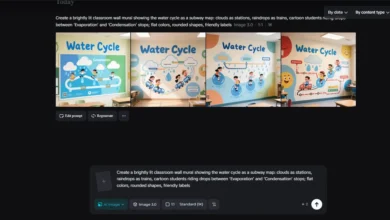
As technology advances, the field of education continually evolves, transforming how lessons are taught and learned. Traditional teaching methods are being replaced by approaches that prioritise student participation. Textbooks continue to play a significant part in learning. However, the way these textbooks are published is an important step for education publishing.
Because content is now being digitized, there have been changes in the creation and use of educational resources. Despite the increasing availability of options on the internet and in e-books, students still prefer printed textbooks. This suggests that having a dependable textbook printing service is important, as it supports the evolving needs of teachers and students.
The Current State of Textbook Printing
Currently, textbook printing services operate in a competitive market. Schools and universities look for items that are both durable, high-quality, and affordable. For a long time, offset printing has been the preferred method for producing textbooks, as it enables high-volume production and helps save money for large print runs.
However, the advent of digital printing has significantly changed the industry. Using digital printing, it is possible to create lower quantities of books with less waste and more room for personalisation. Because of this, print-on-demand services are being increasingly used by academic institutions and publishers to cut costs, improve inventory management, and reduce overheads.
Technological Innovations Shaping the Future
Digital printing is only one part of the innovation happening in textbook printing. Augmented reality (AR) and interactive print are gaining popularity, introducing new methods to make learning more engaging. For example, a QR code included in a textbook can bring complex diagrams to life or allow students to examine 3D models using a smartphone or tablet.
New methods of binding and environmentally friendly materials are playing a crucial role in enhancing the quality of textbooks. Durable bindings guarantee a long life, while using environmentally-friendly print methods shows that organizations are part of the global effort to protect nature, making these services more interesting for institutions concerned about going green.
Customisation and Personalisation
There is a trend toward creating educational materials tailored to each student’s needs. Since teachers strive to tailor their curriculum to their students, the demand for custom-printed textbooks has been increasing. This way, learners experience design, placement and specially selected posts that address the course or programme’s learning objectives.
The Role of Data Analytics
As a new technology, data analytics is making its mark on how textbooks are printed. With access to data, publishers and educators can update textbooks to make them both more engaging and more effective for learning. Analysing data can reveal which subject areas cause students to struggle and how they best remember lessons, helping to strengthen the textbook for the next edition.
Here, the printing industry should focus on being flexible in both its operational processes and customer management. Being able to adjust to different orders, timelines and solutions as needed is extremely important.
Meeting the Challenges of Accessibility and Affordability
When setting up printing services, pay special attention to accessibility and affordability, as these are important considerations for many students. Students with and without visual impairments or other disabilities should have access to educational materials, as they are essential for learning. Services are required to ensure that textbooks are offered in formats such as Braille, large print, and audio.
Choices are greatly affected by the cost. Higher education institutions need to control their expenses, and students are becoming more mindful of their spending at university. The pressure is on textbook printers to ensure that the work is both educational and affordable to clients.
Evolving with Educational Trends
Printing services for textbooks are evolving to keep pace with educational trends, incorporating a mix of traditional and online methods. Because hybrid models are transforming education, textbook-producing services should also be changed. A service that offers flexibility, responds to customers’ requests, and provides clients with a wide range of print and digital solutions is one that is ready for the future.
Conclusion
Textbook printing services can only grow and survive in the modern age if they adapt and try new ideas. Textbooks are now more than just printed pages; today, they focus on involving students with tools that are adjustable for educators.
As education evolves, companies that focus on technology, sustainability, customisation, and accessibility will bring about significant changes in learning.
Textbook printing plays a crucial role in educational publishing and also helps drive changes in learning methods. If these services refine their processes and address issues directly, they will continue to play a crucial role as education evolves.

















